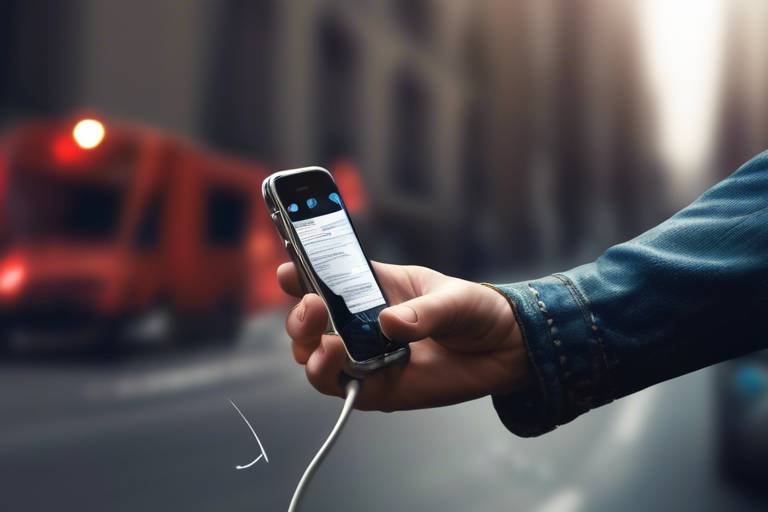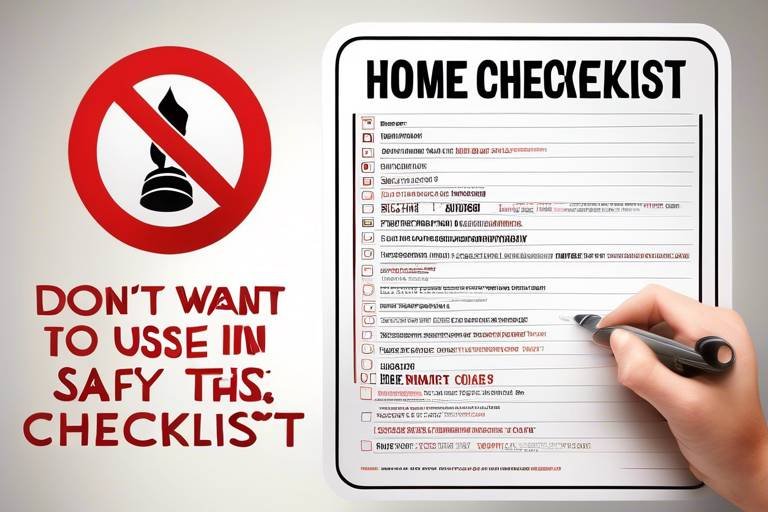Road trip safety: Journey tips for drivers and passengers
Embarking on a road trip can be one of the most exhilarating experiences, filled with the promise of adventure and discovery. However, it’s essential to prioritize safety for both drivers and passengers to ensure that the journey is enjoyable and stress-free. Whether you’re cruising down the highway with friends or embarking on a family vacation, understanding the safety measures you need to take can make all the difference. So, buckle up and let’s dive into some crucial tips that will keep you safe on the open road!
Before you even think about hitting the road, taking the time to conduct thorough vehicle checks is absolutely vital. Imagine setting off on a long journey, only to find yourself stranded on the side of the road due to a flat tire or overheated engine. To avoid such predicaments, here are some key components you should inspect:
- Oil Levels: Check the engine oil to ensure it’s at the right level and change it if necessary.
- Tires: Inspect the tires for proper inflation and tread depth; don’t forget the spare!
- Brakes: Ensure your brakes are functioning well to avoid any mishaps.
- Lights: Test all lights, including headlights, brake lights, and turn signals.
- Fluid Levels: Check coolant, brake fluid, and windshield washer fluid levels.
By conducting these checks, you can minimize the risk of breakdowns and ensure your vehicle is roadworthy, allowing you to focus on enjoying the journey ahead.
Let’s face it, no one likes to think about emergencies, but being prepared can make a world of difference during a road trip. You wouldn’t head into a storm without an umbrella, right? Similarly, having an emergency kit can be your safety net. Here’s what you should consider including:
A well-stocked first aid kit is vital for any journey. Think of it as your personal safety toolbox. Here’s a quick rundown of what to include:
- Adhesive bandages of various sizes
- Antiseptic wipes and ointment
- Gauze pads and tape
- Pain relievers (like ibuprofen or acetaminophen)
- Personal medications
Having these items on hand ensures you’re equipped to handle minor injuries or health issues on the road, allowing you to focus on the fun instead of the "what ifs."
Knowing how to access roadside assistance can provide peace of mind. Make sure to keep the contact information for your roadside assistance provider handy. This could be through your insurance provider, an auto club, or a third-party service. Having this information on hand means you won’t be fumbling for help during a crisis.
Having a list of emergency contacts is essential for safety. Ideally, you should have numbers for:
- Family members
- Friends
- Your roadside assistance provider
- Local emergency services
Store these numbers in your phone and keep a printed copy in your glove compartment for easy access during your trip. It’s like having a safety net—just in case!
Proper route planning can enhance safety and enjoyment. Think of it as mapping out a treasure hunt; the more you prepare, the more fun you’ll have! Make sure to:
- Use a reliable GPS or map app to avoid getting lost.
- Consider rest stops to stretch and refresh.
- Avoid high-risk areas, especially if you’re traveling at night.
Good planning can turn a potential headache into a smooth ride.
Passengers play a crucial role in road trip safety. It’s not just the driver’s job to keep everyone safe! Passengers can assist with navigation, keep the driver engaged, and help manage the overall atmosphere in the vehicle. After all, a happy driver makes for a happy ride!
Minimizing distractions is vital for safe driving. Passengers can help by keeping the conversation light and engaging, but also by avoiding disruptive behaviors. Here are some strategies:
- Limit loud music and unnecessary noise.
- Help navigate using a GPS, but don’t overcomplicate things.
- Be mindful of the driver’s need for focus.
By working together, passengers can contribute to a safer driving environment.
Maintaining energy levels is essential for everyone in the vehicle. Long journeys can be draining, so staying hydrated and having snacks readily available can keep morale high. Think of snacks as your fuel; just like a car needs gas, you need energy to keep going. Pack a variety of snacks—fruits, nuts, and granola bars are great options. And don’t forget the water! Staying hydrated helps keep everyone alert and ready for adventure.
Q: What should I do if my car breaks down?
A: Stay calm, pull over to a safe location, turn on your hazard lights, and contact roadside assistance.
Q: How often should I check my vehicle before a long trip?
A: It’s best to conduct a thorough check at least a week before your trip to address any issues.
Q: What are some must-have items in an emergency kit?
A: Your kit should include a first aid kit, flashlight, water, non-perishable snacks, and a basic toolset.
Q: How can passengers help improve road trip safety?
A: Passengers can assist with navigation, keep the driver engaged, and manage distractions to maintain a safe driving environment.

Pre-Trip Vehicle Checks
Before you embark on that much-anticipated road trip, taking a moment to conduct thorough vehicle checks is not just a good idea—it's a vital step in ensuring your journey is smooth and worry-free. Imagine setting off on a long drive only to be sidelined by a flat tire or an overheating engine. Not only can this ruin your trip, but it can also lead to unsafe situations on the road. So, let’s dive into the key components you should inspect to make sure your vehicle is roadworthy.
First things first, start with the tires. Check the tire pressure and tread depth. Under-inflated tires can lead to poor fuel efficiency and increase the risk of blowouts, while worn-out tires can compromise your vehicle's grip on the road, especially in adverse weather conditions. If you notice any uneven wear, it might be time for a rotation or replacement. Don't forget to inspect the spare tire too—it's often overlooked!
Next up is the oil level. Your engine needs the right amount of oil to function smoothly, so make sure to check the oil level and look for any leaks. If it’s been a while since your last oil change, consider getting one before your trip. A well-lubricated engine is like a well-oiled machine, and you want your ride to be as smooth as possible.
Another crucial aspect is the brakes. Give them a thorough inspection. Listen for any unusual noises when you apply the brakes and feel for any vibrations. If something seems off, don’t hesitate to get them checked. Remember, your brakes are your best friend when it comes to safety on the road.
Additionally, ensure that your lights are functioning correctly. This includes headlights, brake lights, and turn signals. Not only are they essential for your visibility during night driving, but they also communicate your intentions to other drivers. A quick check can save you from potential accidents and keep you safe.
Lastly, don’t forget to check your fluid levels. This includes coolant, brake fluid, transmission fluid, and windshield washer fluid. Each of these plays a crucial role in your vehicle's performance. If you find any of these fluids are low, top them off before you hit the road. It’s a small effort that can lead to big results!
In summary, conducting these pre-trip vehicle checks can significantly reduce the risk of breakdowns and enhance your overall travel experience. Think of it as a preventive measure—a little time spent now can save you from headaches later. So, grab your checklist and ensure you cover all these essential points before you set off on your adventure!
Q: How often should I check my vehicle before a road trip?
A: It's best to perform a thorough check at least a few days before your trip, allowing time for any necessary repairs.
Q: What should I do if I find a problem with my vehicle during the pre-trip check?
A: If you notice any issues, it's advisable to consult a professional mechanic to address the problem before hitting the road.
Q: Are there any specific tools I need for vehicle checks?
A: A tire pressure gauge, oil dipstick, and basic tools for checking fluid levels can be very helpful. Additionally, having a flashlight can assist in inspecting hard-to-see areas.

Emergency Preparedness
Being prepared for emergencies can make a significant difference during a road trip. Imagine cruising down the highway, the sun shining, and your favorite playlist blasting, when suddenly, you hear an unsettling noise coming from the engine. Panic can set in quickly if you aren't ready for such situations. That’s why it’s crucial to equip yourself with the right tools and knowledge before you embark on your journey. A well-thought-out emergency plan will not only give you peace of mind but also ensure that you can handle unexpected hiccups with grace.
First things first, let’s talk about the essentials of creating an emergency kit. Think of this kit as your safety net; it should be stocked with items that can help you tackle minor injuries or mechanical issues. A typical emergency kit might include:
- First Aid Supplies: Band-aids, antiseptic wipes, gauze, and pain relievers are just the tip of the iceberg.
- Basic Tools: A set of screwdrivers, pliers, and a tire inflator can save the day.
- Flashlight: A reliable flashlight with extra batteries can be a lifesaver if you find yourself stranded at night.
- Water and Snacks: Staying hydrated and having energy-boosting snacks can keep spirits high during a wait for assistance.
Additionally, knowing how to access roadside assistance can provide an extra layer of security. Whether it's through your insurance provider or a dedicated service, having this information readily available can turn a stressful situation into a manageable one. Make sure to keep your roadside assistance card or app easily accessible. If you're unsure about the details, it’s worth taking a few moments to look into the options available before you hit the road.
Another critical aspect of emergency preparedness is having a list of important contact numbers. This should not only include family and friends but also local emergency services and your roadside assistance provider. You never know when you might need to reach out for help, so having these numbers stored in your phone or written down in your emergency kit can save precious time during a crisis. Consider creating a simple table to organize this information:
| Contact Name | Phone Number | Relation/Service |
|---|---|---|
| John Doe | (555) 123-4567 | Emergency Contact |
| Roadside Assistance | (800) 555-0199 | Service Provider |
| Local Police | (555) 987-6543 | Emergency Services |
By taking the time to prepare for emergencies, you can transform the potential for chaos into a manageable situation. Whether it's a flat tire, a medical issue, or simply getting lost, being ready for anything will make your road trip a more enjoyable experience. So, before you buckle up and hit the open road, make sure you’ve got your emergency kit stocked, your roadside assistance information at hand, and your important contact numbers organized. This way, you can focus on the journey ahead, knowing you’re well-equipped to handle whatever comes your way.
Here are some common questions regarding emergency preparedness on road trips:
- What should I include in my emergency kit? - Essential items include first aid supplies, basic tools, a flashlight, water, and snacks.
- How can I access roadside assistance? - You can access roadside assistance through your insurance provider or dedicated services, and it's best to have their contact details easily accessible.
- What important numbers should I have on hand? - Keep emergency contacts, roadside assistance, and local emergency services numbers stored for quick access.

First Aid Kit Essentials
When embarking on a road trip, one of the most important yet often overlooked preparations is assembling a well-stocked first aid kit. Just like you wouldn't set off on a journey without fuel in the tank, you shouldn't hit the road without the essentials to handle minor injuries or health issues that might arise along the way. Imagine this: you're cruising down the highway, music blasting, when someone in the car suddenly gets a headache or a scrape. Having a first aid kit on hand can be a game changer, allowing you to tackle these situations swiftly and effectively.
A first aid kit should be tailored to your specific needs, but there are some universal essentials that everyone should include. Here’s a quick rundown of the must-have items:
- Adhesive Bandages: For those unexpected cuts and scrapes.
- Antiseptic Wipes: To clean wounds and prevent infection.
- Gauze Pads and Tape: Useful for larger injuries that need more than just a band-aid.
- Antihistamines: Essential for allergic reactions, especially if you're traveling through areas with pollen or insect bites.
- Pain Relievers: Such as ibuprofen or acetaminophen, to tackle headaches or body aches.
- Burn Cream: For those unfortunate moments when someone gets a little too close to a hot surface.
- Thermometer: To check for fevers, especially in kids.
- Scissors and Tweezers: Handy for cutting bandages or removing splinters.
In addition to these basics, consider any personal medications or items that may be specific to your group’s needs, such as prescription medications, inhalers, or even spare glasses. It’s also a good idea to include a small manual or guide that provides instructions for dealing with common injuries or emergencies. Think of it as your road trip safety net, ready to catch you when things go awry!
Remember, having a first aid kit is just the beginning. It’s equally important to know how to use the items within it. Familiarize yourself with the contents and consider taking a basic first aid course. This knowledge can empower you to act confidently in an emergency, turning panic into action. So, as you prepare for your adventure, don’t forget to pack that first aid kit. It might just save the day!
Q: What should I do if I run out of supplies in my first aid kit?
A: Regularly check your first aid kit and replenish any used items after your trip. Consider keeping a list of supplies to ensure you restock everything before your next journey.
Q: Can I use my first aid kit for pets?
A: While some items can be used for pets, it’s best to have a separate first aid kit specifically for animals. Consult your veterinarian for a list of recommended supplies.
Q: How often should I update my first aid kit?
A: It’s a good practice to review your first aid kit at least once a year or before any major trip. Check expiration dates on medications and replace any used or outdated items.

Roadside Assistance Information
When you're cruising down the highway, the last thing you want is to find yourself stranded on the side of the road. That's where roadside assistance steps in like a superhero ready to save the day! But before you hit the gas, it's essential to know how to access these services when you need them most. First things first, consider the different options available for roadside assistance. Many insurance companies offer this service as part of their auto insurance policies, while others provide it through dedicated programs or memberships. It's a good idea to check with your insurance provider to see if you're already covered, as this could save you time and money in an emergency.
In addition to insurance coverage, there are numerous third-party services that offer roadside assistance, such as AAA, Better World Club, and various apps that connect you with nearby help. To ensure you're prepared, keep the following information handy:
- Contact Numbers: Have the phone numbers of your roadside assistance provider saved in your phone for quick access.
- Membership Details: If you're part of a membership program, know your member ID and any specific instructions on how to request help.
- Vehicle Information: Keep your vehicle details, such as make, model, and license plate number, readily available to provide to the service provider.
When you do find yourself in a situation where you need assistance, stay calm and follow these steps:
- Pull Over Safely: If possible, move your vehicle to a safe location away from traffic.
- Contact Assistance: Call your roadside assistance provider, provide them with your location, and explain the issue.
- Stay with Your Vehicle: Unless it's unsafe to do so, stay in or near your vehicle until help arrives.
Having this information at your fingertips can make a world of difference when you're facing an unexpected breakdown. Remember, the goal is to minimize stress and ensure your safety while waiting for help. So, before you embark on your next road trip, take a moment to familiarize yourself with your roadside assistance options and keep all necessary information easily accessible. After all, being prepared is the best way to enjoy the open road without worrying about what might go wrong!

Important Contact Numbers
When embarking on a road trip, one of the most critical aspects often overlooked is having a list of readily accessible. Imagine being stranded on a deserted road with a flat tire or facing an unexpected medical emergency; having the right numbers at your fingertips can be a lifesaver. It's not just about having your family and friends' numbers; it's about being prepared for anything that might arise during your journey.
To ensure you’re fully equipped, consider storing these numbers in a physical format, such as a notebook, as well as digitally on your phone. This way, you won’t have to scramble through your contacts when time is of the essence. Here are some essential categories of contact numbers to include:
- Roadside Assistance: Whether it’s through your insurance or a third-party service, having this number can save the day.
- Emergency Services: Always have the local emergency services number handy, especially when traveling through unfamiliar areas.
- Family and Friends: Keep a few close contacts in case you need someone to pick you up or provide support.
- Local Hospitals: Knowing the nearest hospital can be crucial in case of medical emergencies.
- Insurance Company: Have your insurance provider’s contact information ready for any claims or inquiries.
Additionally, it’s wise to have a list of mechanics or garages in the areas you’ll be traveling through. You never know when you might need a quick fix or a full service. Consider creating a simple table to organize this information for easy reference:
| Contact Type | Name/Service | Phone Number |
|---|---|---|
| Roadside Assistance | Your Insurance Provider | (123) 456-7890 |
| Emergency Services | Local Police | 911 |
| Family | Mom | (098) 765-4321 |
| Local Hospital | Main Street Hospital | (555) 123-4567 |
| Insurance Company | Your Insurance | (111) 222-3333 |
In conclusion, having a well-organized list of important contact numbers can make all the difference in ensuring a smooth and safe road trip. You never know when you might need to reach out for help, and being prepared can provide peace of mind. So, take a few minutes before you hit the road to gather this information, and store it in a way that’s easily accessible. Your future self will thank you!
Q: What should I do if I lose my phone during the trip?
A: If you lose your phone, try to remember the important numbers and use another device to contact someone. It's also a good idea to have a backup list of numbers in your vehicle.
Q: How can I ensure my emergency contacts are up-to-date?
A: Regularly review your contact list, especially before trips. Make sure to update any changes in phone numbers or services.
Q: What if I’m traveling in a remote area?
A: In remote areas, it’s wise to have printed maps and a list of local services, as mobile coverage may be limited.
Q: Should I inform someone about my travel plans?
A: Yes! Always let a friend or family member know your itinerary and expected arrival times for added safety.

Planning Your Route
When embarking on a road trip, is not just a good idea; it's essential for both safety and enjoyment. Imagine setting off on an adventure without a map—sounds a bit like sailing without a compass, right? The first step in route planning is to decide on your destination and the best way to get there. But it doesn't stop there; you also need to consider the journey itself. Are there scenic byways you want to explore? Perhaps a quirky roadside attraction you've always wanted to visit? Taking the time to map out your journey can transform a simple drive into a memorable experience.
Another critical aspect of route planning is identifying rest stops. Long hours on the road can lead to fatigue, which is a significant risk factor for accidents. Make it a point to schedule regular breaks—every couple of hours is a good rule of thumb. These breaks not only allow everyone to stretch their legs but also provide a chance to refresh and recharge. Here’s a quick tip: use apps or websites that highlight rest areas and attractions along your route. This way, you can plan your stops around interesting sights and local eateries, making the journey as enjoyable as the destination.
Moreover, it's wise to consider high-risk areas when planning your route. Some roads are notorious for heavy traffic, construction zones, or poor conditions. Utilizing navigation apps that provide real-time traffic updates can help you avoid these pitfalls. You wouldn’t want to be stuck in a jam when there’s a beautiful sunset waiting to be enjoyed at your destination! Additionally, keep an eye on the weather forecast. Bad weather can turn a simple drive into a challenging ordeal, so if you know a storm is brewing, it might be worth adjusting your route or schedule.
Lastly, don’t forget to share your route with someone who isn’t on the trip. This is a simple yet effective safety measure. Should anything unexpected happen, it’s always good to have someone who knows your planned path. In a world where technology often lets us down, a good old-fashioned backup plan can save the day. So, as you gear up for your road trip, remember that a well-planned route is your ticket to a smoother, safer journey.
- What should I include in my route plan? It's essential to include your destination, rest stops, points of interest, and potential hazards such as construction zones or high-traffic areas.
- How often should I take breaks during a long drive? Aim for a break every two hours to stretch, hydrate, and refresh your mind.
- Can I rely solely on GPS for navigation? While GPS is helpful, it’s wise to have a physical map or a backup navigation app in case of poor signal areas.

Passenger Responsibilities
When embarking on a road trip, it’s easy to think that the driver bears the brunt of responsibility. However, passengers play a vital role in ensuring a smooth and safe journey. Just as a ship needs a crew to navigate the waters, a car needs attentive passengers to help steer clear of potential hazards. So, what can passengers do to contribute to the overall safety and enjoyment of the trip? Let’s dive into the key responsibilities that every passenger should embrace.
First and foremost, navigation assistance is a crucial duty for passengers. While the driver focuses on the road, passengers can help by keeping an eye on the map or GPS. This not only helps in avoiding wrong turns but also allows the driver to concentrate on driving without the added stress of constantly checking directions. Imagine trying to solve a puzzle while someone is blaring a horn at you; it’s distracting! Therefore, having a passenger who can guide the route can make all the difference.
Another important responsibility is keeping the driver engaged. Long stretches of highway can lead to monotony, which might cause the driver to lose focus. Passengers can combat this by initiating conversations, playing games, or even singing along to the radio. These activities not only keep spirits high but also help prevent fatigue. Think of it as a team effort—just like a coach encourages their players, passengers should motivate the driver to stay alert and energized.
Moreover, passengers should be proactive in managing distractions. This means avoiding loud noises, excessive movement, or anything that might divert the driver’s attention. It’s like being in a theater; if someone is talking loudly during an intense scene, it ruins the experience for everyone. Passengers must respect the driver’s need for focus and create a calm environment within the vehicle. If a phone call or text message comes through, it’s best for passengers to handle it rather than passing it to the driver.
Additionally, passengers should take on the responsibility of staying hydrated and fed. Long drives can lead to boredom and fatigue, but having snacks and drinks readily available can keep energy levels up. Think of snacks as the fuel for the journey; just as a car needs gas, people need nourishment to keep going. So, packing a cooler with refreshing beverages and healthy snacks can uplift everyone’s mood and maintain a positive atmosphere in the car.
In summary, the role of passengers extends far beyond simply enjoying the ride. By actively participating in navigation, keeping the driver engaged, managing distractions, and ensuring everyone stays nourished, passengers can significantly enhance the road trip experience. So, the next time you hit the road, remember: it’s not just about the destination, but also about how you get there together!
- What should passengers do if the driver seems distracted?
Passengers should gently remind the driver to focus on the road and offer to assist with navigation or entertainment to keep them engaged.
- How can passengers help prevent driver fatigue?
Engaging in conversations, playing games, and taking turns with snacks can help keep the driver alert and reduce fatigue.
- What snacks are best for road trips?
Healthy snacks like nuts, fruits, and granola bars are great options as they provide energy without causing sugar crashes.
- How can passengers manage distractions effectively?
By maintaining a calm environment, avoiding excessive noise, and managing phone notifications, passengers can help the driver stay focused.

Managing Distractions
When you're on a road trip, distractions can be a major roadblock to safety. Imagine you're cruising down the highway, the sun is shining, and your favorite playlist is pumping through the speakers. Sounds great, right? But suddenly, your phone buzzes with a notification, your passenger is asking about the next rest stop, and the kids in the back are having a mini wrestling match. It's chaos! This is where managing distractions becomes crucial for both the driver and passengers.
First and foremost, it's essential to establish some ground rules before you even hit the road. Discuss with everyone in the vehicle how to minimize distractions. For instance, you might agree to keep phone use to a minimum—no scrolling through social media or texting while the car is in motion. Instead, have a designated navigator who can handle GPS duties. This way, the driver can focus on the road without constantly glancing at a screen or being interrupted by questions about directions.
Another effective strategy is to keep the environment within the vehicle calm and organized. A cluttered car can lead to a cluttered mind. Make sure that all bags, snacks, and personal items are stored securely before the journey begins. This not only prevents items from flying around during sudden stops but also reduces the temptation to reach for something while driving. Speaking of snacks, keep them healthy and easy to eat—think granola bars or fruit slices that won't create a mess.
It's also beneficial to engage in light conversation that keeps everyone alert without overwhelming the driver. You can play games like “20 Questions” or “I Spy,” which can be entertaining and help the driver stay engaged without being distracted. However, avoid deep or intense conversations that might lead to emotional distractions. The goal is to keep the atmosphere lively yet focused on the road ahead.
Moreover, consider implementing a “no loud music” rule if it tends to distract the driver. While upbeat tunes can enhance the mood, they can also make it hard to concentrate, especially if the volume is cranked up. Instead, opt for a balanced playlist that everyone enjoys but doesn’t require the driver to shout over the music.
In summary, managing distractions during a road trip is all about communication, organization, and creating a supportive environment. By setting clear expectations and keeping the atmosphere relaxed, you can help ensure that the driver remains focused and the journey remains safe. After all, the goal is to enjoy the ride and create lasting memories without the bumps that distractions can cause!
- What are some common distractions for drivers? Common distractions include mobile phones, loud music, passengers engaging in intense conversations, and navigation devices.
- How can passengers help minimize distractions? Passengers can assist by managing navigation, keeping the environment organized, and engaging in light conversation without overwhelming the driver.
- Is it safe to eat while driving? While it can be convenient, eating while driving can be distracting. It's best to schedule breaks for meals or snacks instead.
- What should I do if I feel tired during a long drive? If you start feeling tired, it's crucial to pull over safely and take a break. A short nap or a quick walk can help refresh you.

Staying Hydrated and Fed
When it comes to road trips, keeping everyone in the vehicle hydrated and fed is not just a luxury; it’s a necessity! Imagine being on a long stretch of highway, the sun blazing down, and your energy levels plummeting. Sounds dreadful, right? Staying hydrated helps maintain your focus and energy, ensuring that the driver remains alert and the passengers engaged. So, let’s dive into some practical tips on how to keep the snacks flowing and the water bottles filled during your journey.
First things first, **water** should be your go-to drink. It’s easy to overlook how much hydration we need, especially when we’re busy enjoying the scenery or jamming out to our favorite playlists. Aim for at least 8 ounces of water every couple of hours. A good rule of thumb is to keep a cooler stocked with bottled water or a refillable water jug. Not only does this save money, but it also reduces waste. Plus, it’s super refreshing to sip on chilled water during those hot summer drives!
Now, let’s talk about food. Having a variety of snacks on hand can transform a monotonous drive into a delightful culinary experience. Think of it as your personal road trip buffet! Here are some snack ideas that are easy to pack and won’t leave a mess in the car:
- Fruits: Apples, bananas, and grapes are great options. They’re healthy, refreshing, and easy to eat on the go.
- Nuts: A mix of almonds, walnuts, and cashews can provide a healthy dose of energy without weighing you down.
- Granola Bars: These are perfect for a quick pick-me-up and come in a variety of flavors.
- Crackers and Cheese: A classic combo that’s satisfying and easy to munch on.
When packing your snacks, consider using a cooler or insulated bag to keep perishables fresh. This can also be a great way to store drinks and keep them cold. If you’re traveling with kids, let them help choose the snacks. This not only keeps them engaged but also makes them more likely to eat what you’ve packed. Just make sure to avoid overly sugary snacks that can lead to energy crashes later on!
Another tip is to schedule regular breaks. Not only does this give everyone a chance to stretch their legs and use the restroom, but it also provides an opportunity to grab a bite to eat. Look for rest areas or parks where you can enjoy a picnic. Eating outside can be a refreshing change from the confines of the car and can boost everyone's mood.
In summary, staying hydrated and fed during a road trip is all about preparation and variety. By planning ahead and packing the right snacks and drinks, you can ensure that everyone remains happy and energized throughout the journey. Remember, a well-fed traveler is a happy traveler!
Q: How much water should I drink on a road trip?
A: Aim for at least 8 ounces of water every couple of hours to stay properly hydrated.
Q: What are some healthy snack options for long drives?
A: Fruits, nuts, granola bars, and crackers with cheese are excellent choices that are easy to pack and eat.
Q: How often should we take breaks during a long drive?
A: It’s recommended to take a break every 2-3 hours to stretch, hydrate, and grab a bite to eat.
Frequently Asked Questions
- What are the key vehicle checks to perform before a road trip?
Before you hit the road, it’s essential to check several key components of your vehicle. Start with the tires—make sure they are properly inflated and have enough tread. Then, check the oil level and coolant to avoid overheating. Don’t forget to inspect the brakes, lights, and windshield wipers. A quick check can save you from unexpected breakdowns and ensure a smooth journey!
- What should I include in my emergency kit for a road trip?
Your emergency kit should be stocked with essentials like a first aid kit, flashlight, batteries, water, non-perishable snacks, and basic tools. It’s also wise to include a blanket, jumper cables, and a roadside flares or reflective triangles. Being prepared can make all the difference if something goes wrong on your journey.
- How can I stay safe while driving at night?
Driving at night can be challenging, but there are ways to enhance your safety. Ensure your headlights are clean and functioning properly. Take regular breaks to avoid fatigue, and avoid distractions like your phone. If possible, travel with a passenger who can keep you engaged and alert. Remember, it’s all about staying focused and aware!
- What are some tips for managing distractions while driving?
Passengers can play a crucial role in minimizing distractions. They should help with navigation, keep the music at a reasonable volume, and avoid engaging in heated discussions. If the driver seems distracted, it’s perfectly okay for passengers to gently remind them to focus on the road. Teamwork makes the dream work!
- How can I keep everyone hydrated and energized during long trips?
Staying hydrated and fed is vital for maintaining energy levels on long journeys. Pack plenty of water bottles and healthy snacks like nuts, fruits, or granola bars. Avoid heavy meals that can make everyone sluggish. Frequent short breaks for stretching and snacking can also help keep morale high and spirits lifted!
- What are the most important contact numbers to have on hand?
It’s crucial to have a list of important contact numbers readily available. This should include roadside assistance, emergency services, and contacts for family or friends who can help in case of an emergency. Store these numbers in your phone and have a printed copy in your glove compartment for easy access.



















